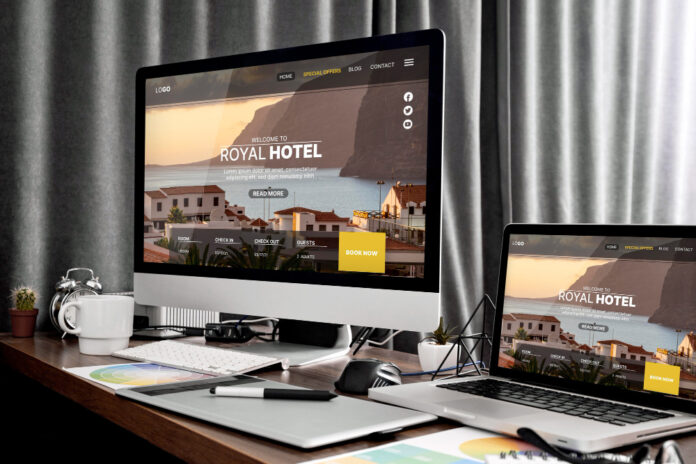In the enchanting world of website design, where creativity meets functionality, the quest for stunning visuals is not just an ambition—it’s a necessity. Crafting a website is akin to painting on a digital canvas, where each stroke is a line of code and every color blend is a meticulous choice of theme and layout. The artistry involved in this process can transform the mundane into the magnificent, turning a simple online presence into a captivating digital experience. This article delves deep into the heart of website design wizardry, unveiling techniques that breathe life into visuals and engage users beyond the ordinary.
The Spellbinding Start: Understanding the Canvas
Before the first pixel is placed, the successful website designer must understand their canvas—the digital expanse where aesthetics meet user experience. This understanding isn’t merely about recognizing screen sizes or device types; it’s about appreciating the user’s journey from the moment they land on the page. Herein lies the first secret: designing for emotion and interaction, not just for looks.
Harmony of Elements: Balancing Act of Design
In the realm of website design, each element holds the potential to contribute to a story. From typography to color schemes, from layout to imagery, every choice is a thread in the fabric of the webpage. However, the true wizardry lies in the balance. A website swathed in vibrant colors may captivate the eye, but without the right contrast or whitespace, it can quickly become an overwhelming chaos.
Typography, in its own right, is a powerful spell in the designer’s arsenal. The right font does not merely convey information; it sets the tone, evokes emotion, and enhances readability. Pairing fonts and mastering hierarchy can transform text into a visual journey, guiding the user’s eye from headline to body text with seamless grace.
Magical Motifs: The Power of Branding in Website Design
Branding in website design transcends mere logos and taglines. It’s about weaving a consistent theme throughout the site, creating an atmosphere that resonates with the audience. This requires not just artistic flair but a deep understanding of the brand’s ethos and the message it seeks to convey. A well-branded website is a symphony of color, imagery, and text that speaks directly to the viewer’s heart, turning casual visitors into loyal patrons.
The Alchemy of Layouts: Crafting the User’s Journey
A well-structured layout is like a map to treasure; it guides the user through the website, from discovery to action, with intuitive ease. The clever use of grids, sections, and navigational elements can turn a confusing labyrinth into a clear path, leading the user naturally from one point to the next. Here, the wizardry lies in anticipation—predicting the user’s needs and designing a flow that feels as natural as a river running through the landscape.
Imagery and Icons: Windows to the World
In the digital realm, an image can be a portal—a window into the heart of the website. The strategic use of imagery and icons can elevate a website from plain to profound, creating a visual rhythm that complements the content. But beware the curse of overuse or irrelevance; every image must have a purpose, every icon a clear meaning. In this delicate dance, quality triumphs over quantity, and relevance is king.
Interactive Elements: The Spark of Engagement
The magic of website design often shines brightest in its interactive elements. Hover effects, scroll animations, and dynamic content can turn a static page into a living landscape, inviting the user to explore, discover, and engage. But as with all spells, caution is advised—overuse can lead to distraction or annoyance. The key is subtlety; the goal is to enhance the user experience, not overshadow the content.
Testing and Feedback: The Crucible of Improvement
Even the most experienced wizards must test their spells. In website design, this means rigorous testing across devices and browsers, seeking feedback from real users, and being prepared to iterate. The journey of a website from launch to maturity is paved with feedback, analytics, and continuous improvement. The wise designer knows that a website is never truly finished but is a living entity, growing and evolving with its audience.
This inclusive approach extends to the choice of colors, fonts, and interactive elements, ensuring they are not just aesthetically pleasing but also readable and functional for people with various disabilities. The true wizardry in website design lies not in creating the most visually stunning site but in crafting experiences that are memorable, accessible, and impactful for everyone.
Furthermore, sustainability in website design is an emerging conversation, intertwining the magic of creativity with the responsibility of environmental stewardship. Designers are now considering the carbon footprint of their websites, optimizing images, and streamlining code to ensure that our digital creations tread lightly on the earth. This new dimension adds a layer of complexity and consciousness to the design process, challenging us to rethink our approaches and methodologies.
In embracing these challenges, website designers are not just artists and technicians; they are also visionaries and guardians of the digital realm. They hold the power to shape perceptions, influence decisions, and drive actions. With each project, they have the opportunity to forge connections, build communities, and create lasting impressions.
As we look to the future, the field of website design is poised for even greater innovations. Technologies like AI, VR, and AR are opening new frontiers for creativity and interaction, offering unprecedented ways to engage and mesmerize users. The role of the designer is evolving, merging traditional skills with new competencies, and continually adapting to the ever-changing digital landscape.
In conclusion, website design is a form of modern-day wizardry, blending art, technology, and psychology to create digital experiences that move, engage, and inspire. It is a craft that demands not only creativity and technical skill but also empathy, insight, and a deep commitment to the user’s experience. As designers, our mission is to harness this power responsibly, crafting websites that not only dazzle the eyes but also touch the heart and ignite the mind. In this digital age, where every click and scroll tells a story, let us be the ones who write captivating tales, build bridges across cyberspace, and create magic that lingers long after the screen goes dark.
















